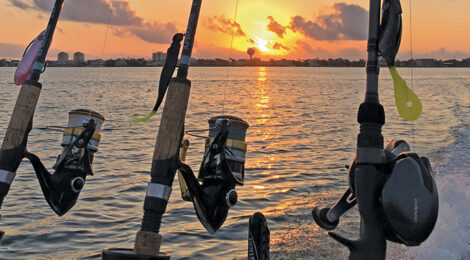
Early Winter Flats — Tops and Tails
A few things to consider when putting together a late fall/early winter tackle selection.
Story and photography by Danno Wise
December – the holiday “season” is upon us and the end of the year is near. The weather is certainly changing. While most everyone thinks of December as a winter month, the first three weeks are actually autumn, as the Winter Solstice doesn’t land until December 21. So, despite what the plethora of Christmas lights and artificial snowmen found in yards and storefronts across the Lone Star State may suggest, December is when we see late fall transition to winter.
Of course, this being Texas and all, when winter weather shows up – or how long it stays – is anyone’s guess. Some years winter weather hits before the calendar says it should. Other years, it never shows up at all. Often times, it pokes its head out for a few days then allows fall-like temperatures to resume for a bit. So far, 2022 seems more schizophrenic than most years given an extraordinarily hot summer, followed by an early fall sprinkled with harder-than-normal fronts.
About the only thing that is certain about December weather along the Texas coast is it varies wildly. The frequent oscillation between warm, cool and cold weather makes December the perfect time to employ the traditional Texas inshore two-step of tops and tails. With even a modest selection of these two lure types, Texas bay fishermen can quickly adapt to whatever conditions December throws at them on a given day.
That said, December can be a time of extreme swings in changes in conditions. Your tackle selection should reflect that. So, there are a few basics to consider when putting together a late fall/early winter selection that will apply to both bait types. First is size. People always think big baits in winter. Generally that is true for a couple of reasons. First off, most prey items remaining in bay at this point is large, so predator fish are used to keying in on big prey. Big baits are also the right call when water is rough and muddy – as it often is pre- and post-front.
************************************************************************
To read more, click here to SUBSCRIBE








